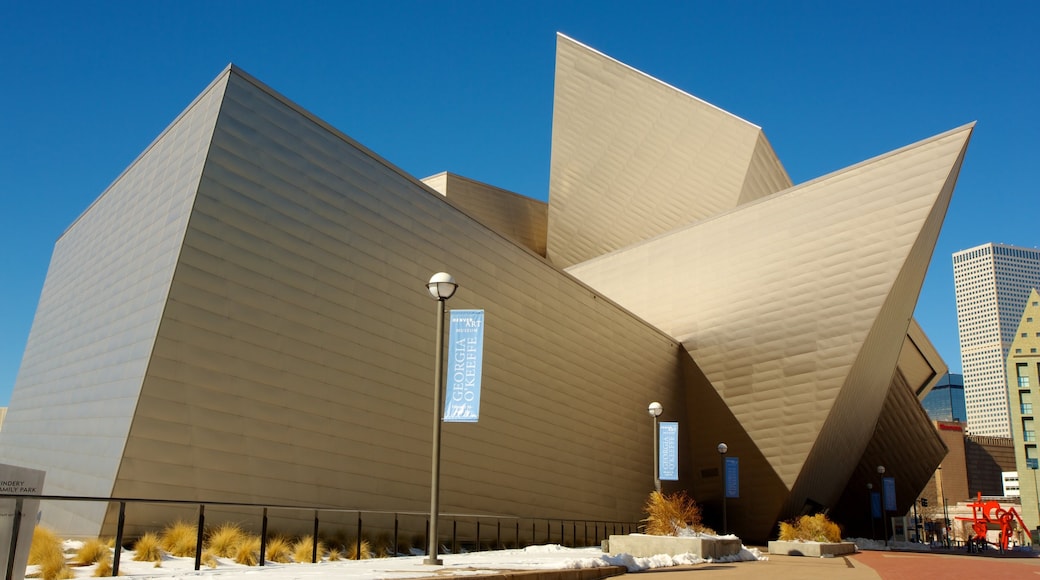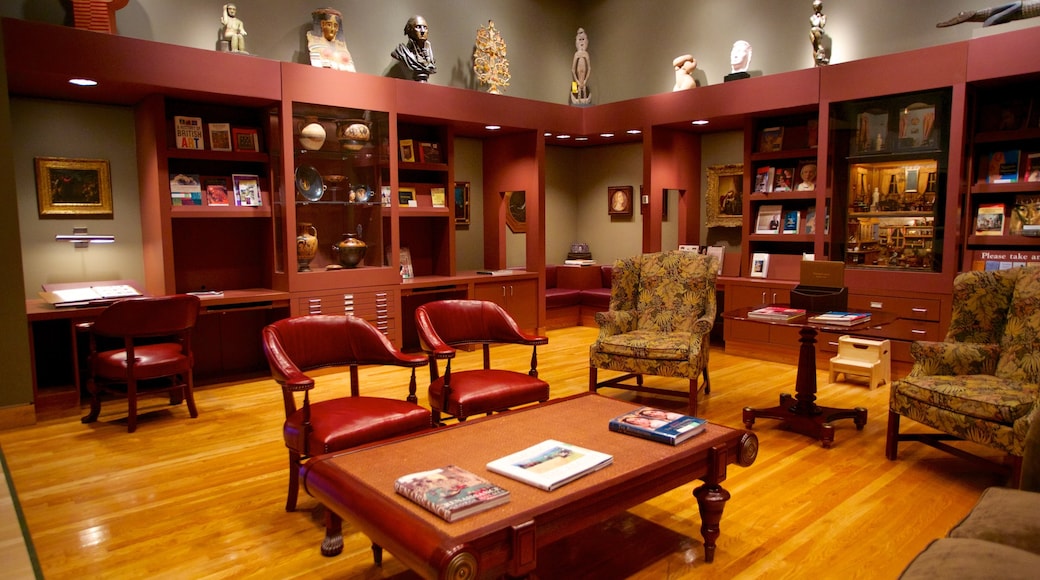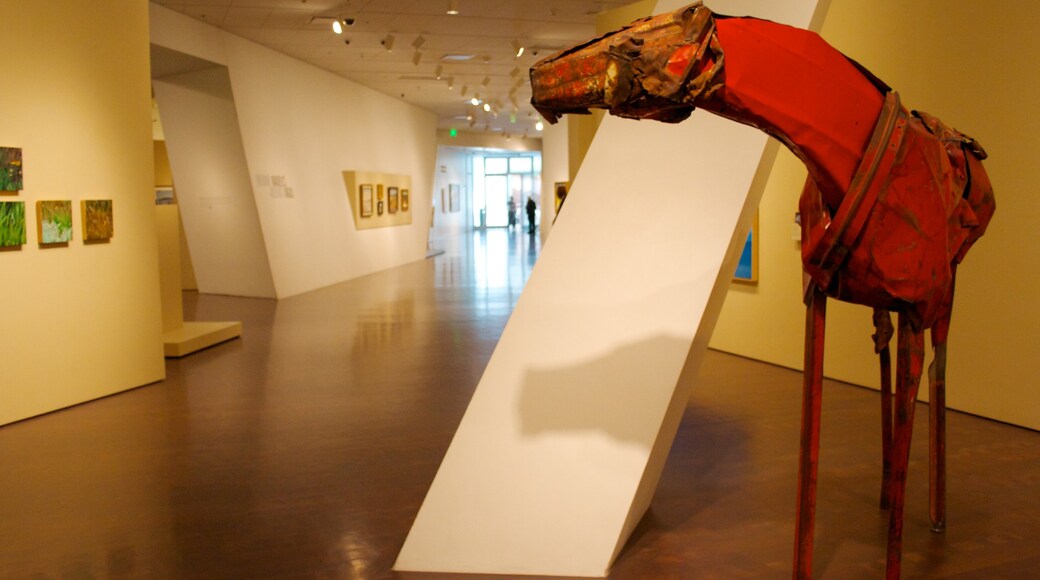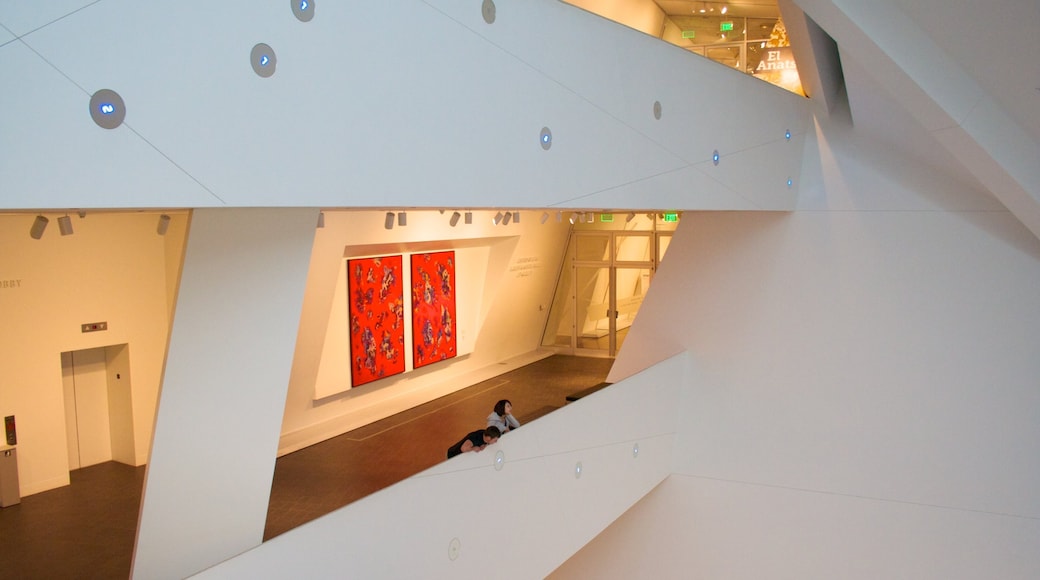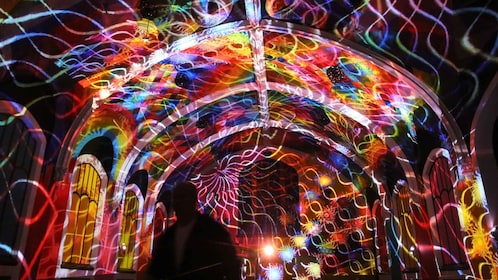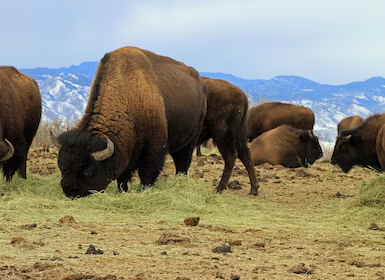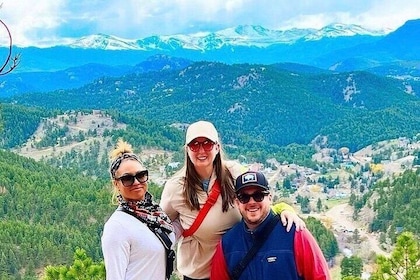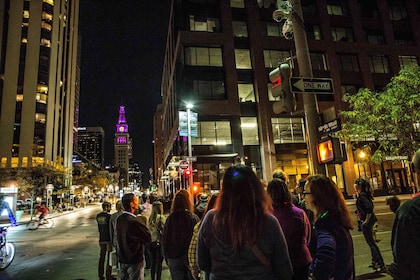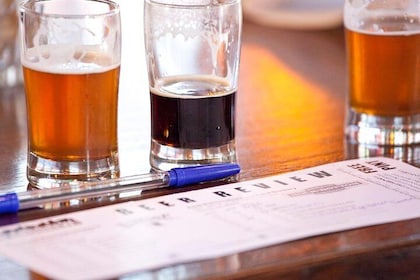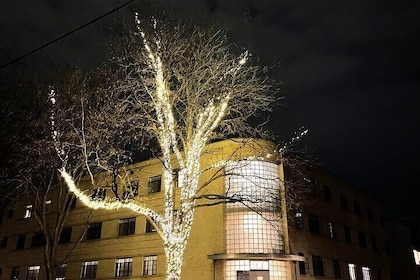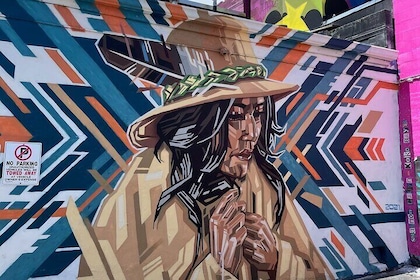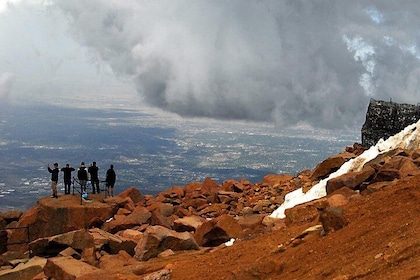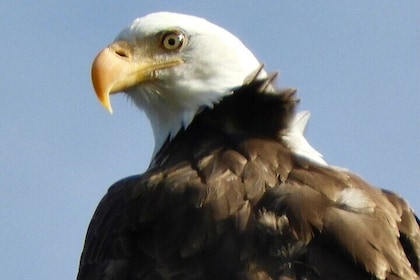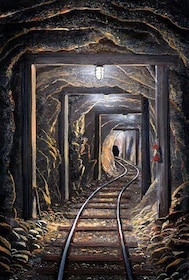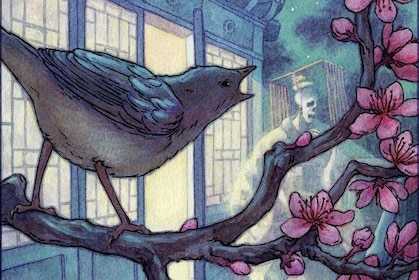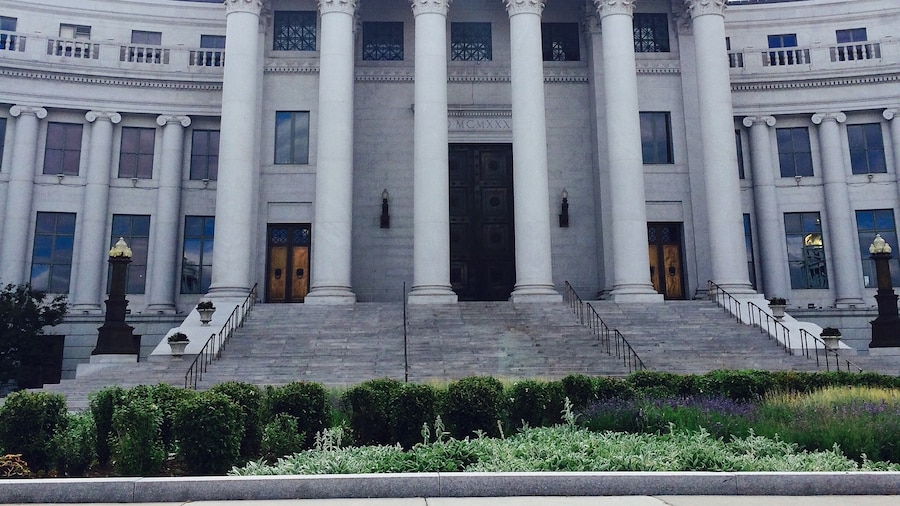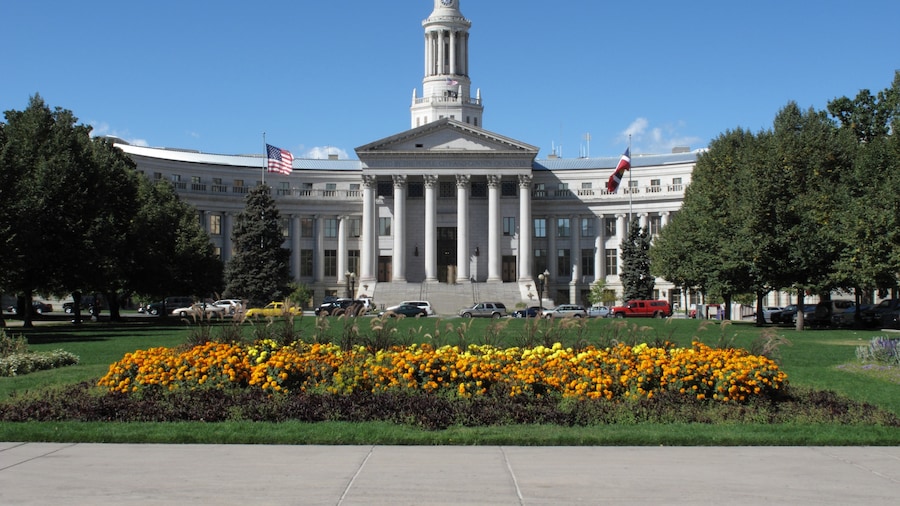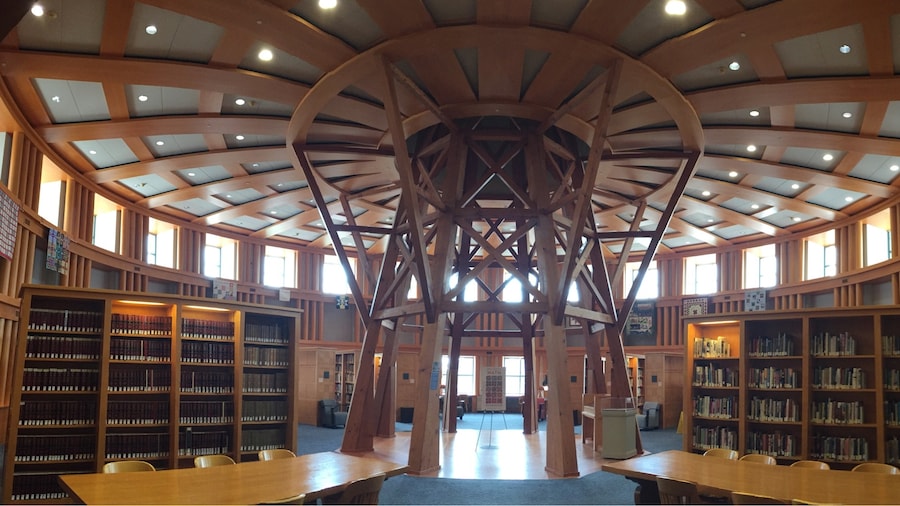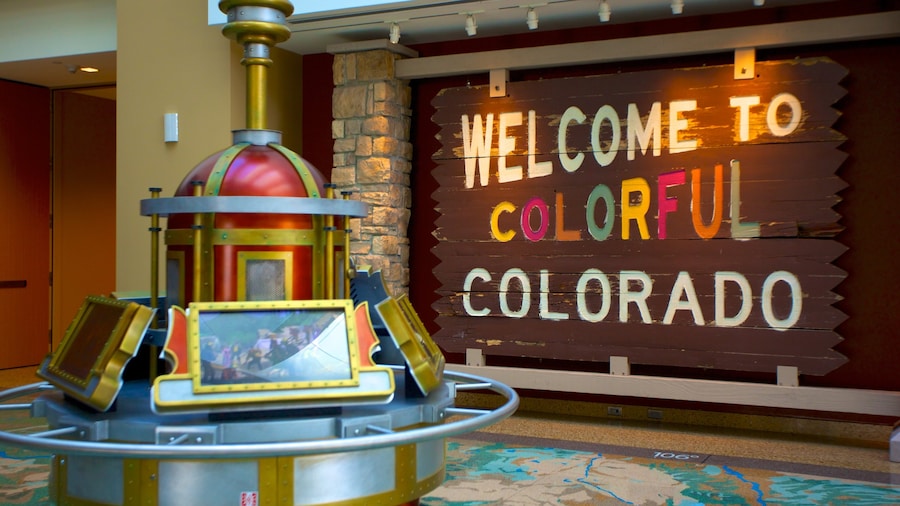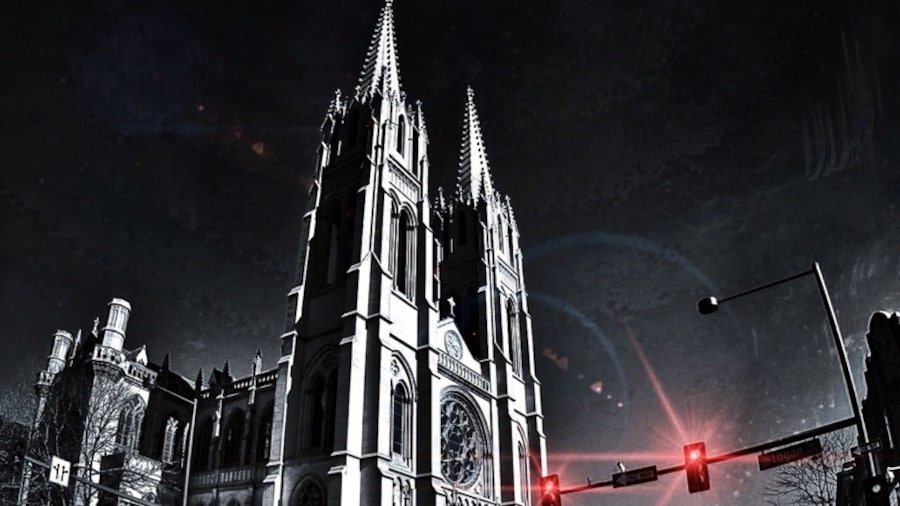The Denver Art Museum has had numerous homes since its beginnings as the Denver Artists’ Club in 1893. The current 350,000-square-foot (32,500-square-meter) museum in Denver’s Civic Center, located downtown, is an architectural landmark made up of two distinct buildings. The North Building, opened in 1971, has seven stories and is covered in more than 1 million shimmering grey tiles. It was designed by famous Italian architect Gio Ponti. The Frederic C. Hamilton wing, opened in 2006, connects to the North Building by a bridge. This section was designed to reflect the peaks and rock formations of the surrounding mountains. It was the joint creation of renowned architect Daniel Libeskind and Denver-based Davis Partnership Architects. Libeskind also designed Berlin’s revered Jewish Museum, among other notable buildings.
There are some 70,000 artworks in the Denver Art Museum, spanning both historic and modern eras and several continents. The museum has a highly regarded permanent collection of American Indian art in the North Building. There are also interesting exhibits of pre-Columbian and Spanish Colonial collections of paintings, sculpture, furniture, silver, ceramics and decorative arts. Check the gallery website for the latest temporary exhibition.
Families are welcome at the gallery and will find plenty to occupy young ones, including craft activities and interactive installations. On weekends and during school breaks, visit the Family Activity Cart near the museum entrance to find out what’s going on.
The museum shop has prints, books, jewelry and handmade trinkets by local artists. There are three on-site dining options. Tea, coffee, pastries, wine and cheese are available at Mad Beans and Wine Café. Mad Greens Inspired Eats serves salads, soups and sandwiches, while leisurely three-course lunches are provided at Palettes Restaurant.
The Denver Art Museum is easily accessible by public transportation or car. Parking is available nearby, and there’s also a shuttle from the 16th Street Mall.
